
Last week I had the good fortune of meeting up with the men
that founded, managed, and designed games for CommaVid, an early 1980's company
who manufactured for the Atari 2600. Until now, very little public information
was available about this company. What we knew about them were the games they
produced - including two incredible rarities in the Atari 2600 library - and their
erratic packaging of games.
CommaVid was the brainchild of three
Chicago
area physicists: Dr. Irwin Gaines, Dr. John Bronstein, and Dr. Joseph Biel.
Each motivated and fascinated with the technology of the time, these brilliant
fellows set out to create games that would be both aesthetically pleasing as
well as fun to play. Though CommaVid isn’t the name that leaps to mind when you
think of great graphics and gameplay, I’ve always been a fan of their games
simply because they were so different. There really isn’t a game in their
library that’s anything like any other game I’ve played.
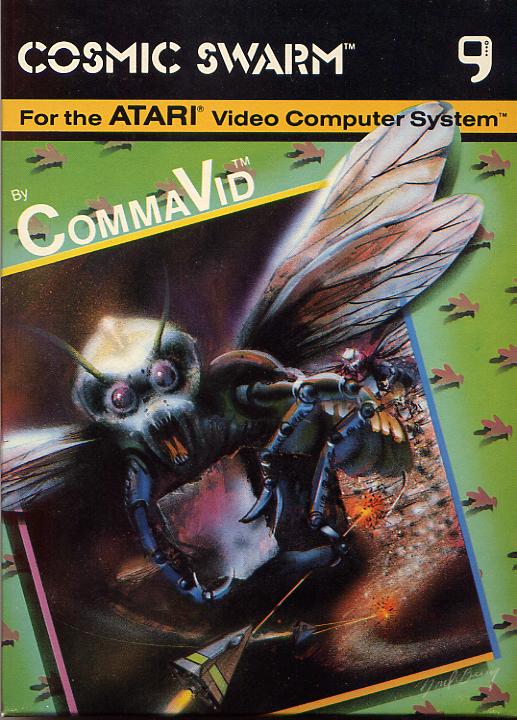
I took this trip with fellow
Classic Gaming Expo and Digital Press associates John Hardie and Sean Kelly. Our first trip was to Dr. John
Bronstein’s place. In his words, “Irwin [Gaines] was the creative one, Joe [Biel]
was the professional one, and I was the one who was neither”. It’s hard to
imagine that Bronstein is anything short of genius. He was the one who designed
both MagiCard and Video Life – the company’s first two offerings - for the
Atari 2600. And if neither of those titles impress you, consider that he
personally reverse-engineered the Atari 2600 using a home-made unit, which sits
between a game cartridge and the 2600. The unit allowed him to alter bytes from
the input source code via diodes (scores of them) to the output to see the
results (click
HERE to get a good look at it). Yup. Way over my head.
We spent several hours going through the archives of Dr.
Bronstein, which included lots of home-made circuitry and tools. Oddly, there
were as many Tandy TRS-80 Color Computer pieces in his possession as Atari
pieces. He explained that what they had to do was “force” the TRS-80 CoCo
running a 6809 CPU (and a program written to compile 6809 source code) to
compile 6502 source code for Atari 2600. Sean noted that CommaVid seemed “to be
built pretty much on Radio Shack parts”, and Bronstein complied with a grin.
 Besides the museum pieces that will be displayed at Classic
Gaming Expo next year, we were naturally curious about the games CommaVid
produced as well, and learned some interesting things from Dr. Bronstein.
Bronstein designed CommaVid’s first real “game”, Cosmic Swarm. In his notes he
pointed out that the original name for this game was to be Termite, but after
some consultation with marketing friends who urged that the game have a sexy,
outer-space hook, Bronstein came up with the story that would later grace the
back of the box. The title was changed to Cosmic Swarm. Besides the museum pieces that will be displayed at Classic
Gaming Expo next year, we were naturally curious about the games CommaVid
produced as well, and learned some interesting things from Dr. Bronstein.
Bronstein designed CommaVid’s first real “game”, Cosmic Swarm. In his notes he
pointed out that the original name for this game was to be Termite, but after
some consultation with marketing friends who urged that the game have a sexy,
outer-space hook, Bronstein came up with the story that would later grace the
back of the box. The title was changed to Cosmic Swarm.
Dr. Bronstein kept his development work from his days with
CommaVid that turned up some interesting things as well. Naturally, we were
looking for game titles that were announced but never released. Where was
Mission Omega? Rush Hour? Underworld? Well, at least one of those titles has
surfaced, though it has some issues. Rush Hour was to be a later title
(CommaVid’s 10th game), and its development was outsourced by CommaVid to an
independent programmer. Ironically, this person was in an automobile accident
during the development and it's believed the project was eventually scrapped
before completion. The game has some syncing problems, which cause some
flicker, but it's definitely salvageable. It needs a little tweaking but seems
fairly complete otherwise. What we can see and play looks very promising, and
there was even a box completed for the game!
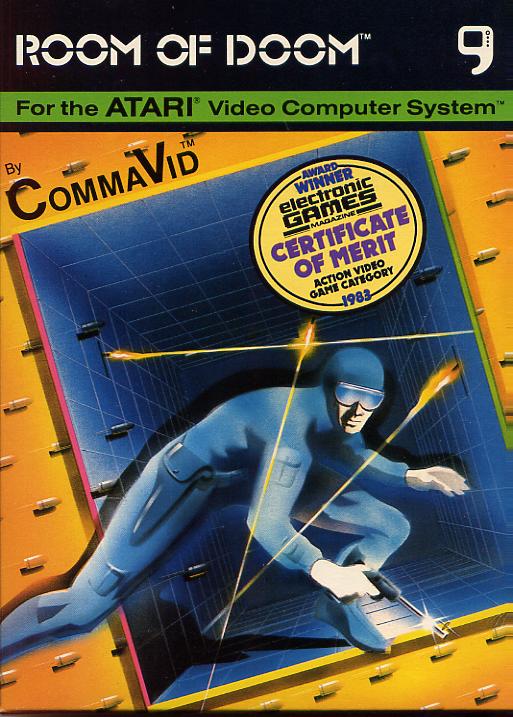 In Dr. Bronstein’s notes there were also references to a
game called Ortho F. He explained that he began work on this one but it was too
large and complex for the Atari VCS. In Bronstein's words "if the Atari
system could hold sixteen megabytes of code, it may have been a
possibility". Among the beta versions in his possession, there was also an
EPROM with a sound creation demo as well as a graphics editor of some sort.
These were also home-made, because CommaVid wasn't given any development tools
and created these out of sheer necessity. There was also a one-screen demo of
some sort labeled Frog. Pressing the button extends the tongue of a frog that
is sitting stationary at the bottom of the screen. At the top are three
motionless moths. An early version of another game? A demo of some sort? We
would later find out the answer to this. In Dr. Bronstein’s notes there were also references to a
game called Ortho F. He explained that he began work on this one but it was too
large and complex for the Atari VCS. In Bronstein's words "if the Atari
system could hold sixteen megabytes of code, it may have been a
possibility". Among the beta versions in his possession, there was also an
EPROM with a sound creation demo as well as a graphics editor of some sort.
These were also home-made, because CommaVid wasn't given any development tools
and created these out of sheer necessity. There was also a one-screen demo of
some sort labeled Frog. Pressing the button extends the tongue of a frog that
is sitting stationary at the bottom of the screen. At the top are three
motionless moths. An early version of another game? A demo of some sort? We
would later find out the answer to this.
Still no Mission Omega, a game that Bronstein himself was
designing. We did discover the part number among the notes, however: CM006.
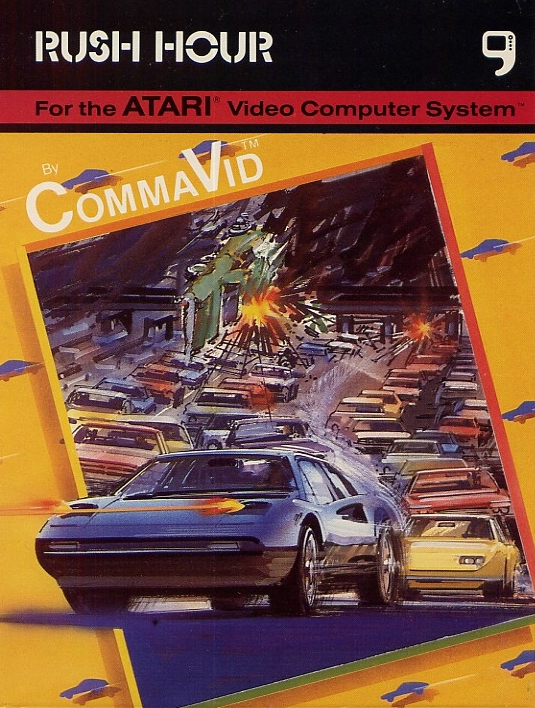 Our next trip was to The Caribou coffee shop to meet with
Dr. Joseph Biel, who we discovered was the designer of CommaVid’s Stronghold.
We also learned that CommaVid was hired by Coleco to program Venture for the
Atari 2600, and Biel was the guy
who programmed the game for CommaVid under contract by Coleco. Our next trip was to The Caribou coffee shop to meet with
Dr. Joseph Biel, who we discovered was the designer of CommaVid’s Stronghold.
We also learned that CommaVid was hired by Coleco to program Venture for the
Atari 2600, and Biel was the guy
who programmed the game for CommaVid under contract by Coleco.
Dr. Biel reinforced some of Dr. Bronstein’s recollections of
CommaVid, and added some interesting new tidbits. For example, when we asked
about the various box sizes and artwork styles inherent in their game library,
he explained that the original artwork for CommaVid was done by a local artist
who had also done some arcade graphics for a local coin-op manufacturer. She
did the original, abominable artwork for Cosmic Swarm. Later, when CommaVid
began to expand their distribution they were pointed by a marketing consultant
to a designer who created the later box art which was markedly more
professional. The box art for Cosmic Swarm that was likely only seen in Europe
is just fantastic.
Another outsourced project involved a bio-feedback
"game" where you could read the "player" pulse, blood
pressure, and temperature. Very much like Synapse's Relax by the sound of it
but definitely not the same exact project. We had also asked about the Frog
game we had seen earlier, which he explained was simply a program used to test
some graphic theories that would later be used in his game Stronghold.
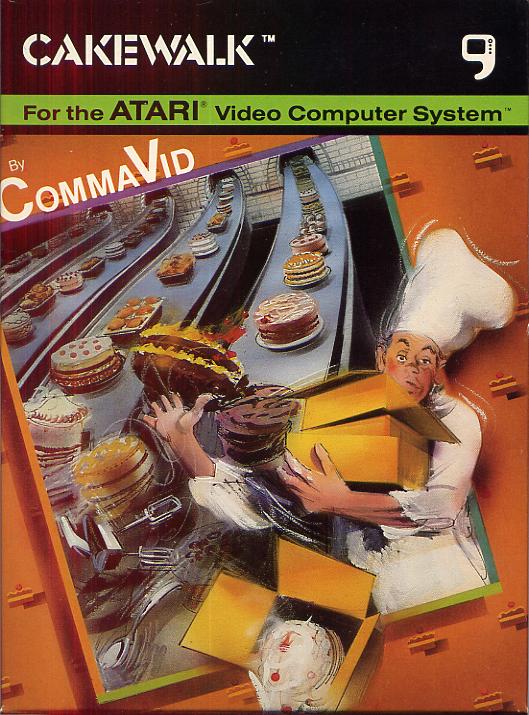 Our final destination was the home of Dr. Irwin Gaines, who
we discovered was the designer of Room of Doom, Mines of Minos, and Cakewalk –
the games most often cited as the best CommaVid had to offer. By the time we
had met up with Dr. Gaines, we had most of the information about CommaVid’s
history, but he was able to add a few more gems. For example, he had a box of
cassette software with compilers, tools, and data on them. There were also
several boxes of EPROMs that we have yet to go through and we're hoping to
discover some of the other unreleased titles such as Mission Omega and
Underworld. We did happen to see some other interesting versions of a few
CommaVid titles among Dr. Gaines' archives along with an EPROM containing what
appears to be a sprite editing program. We'll update you if we can figure out
exactly what this is supposed to do. Oh, one other note. The part number on
Underworld (which was previously unknown) is CM007. Our final destination was the home of Dr. Irwin Gaines, who
we discovered was the designer of Room of Doom, Mines of Minos, and Cakewalk –
the games most often cited as the best CommaVid had to offer. By the time we
had met up with Dr. Gaines, we had most of the information about CommaVid’s
history, but he was able to add a few more gems. For example, he had a box of
cassette software with compilers, tools, and data on them. There were also
several boxes of EPROMs that we have yet to go through and we're hoping to
discover some of the other unreleased titles such as Mission Omega and
Underworld. We did happen to see some other interesting versions of a few
CommaVid titles among Dr. Gaines' archives along with an EPROM containing what
appears to be a sprite editing program. We'll update you if we can figure out
exactly what this is supposed to do. Oh, one other note. The part number on
Underworld (which was previously unknown) is CM007.
We were also quoted some interesting production numbers.
According to Dr. Gaines, only 50 to 100 MagiCard cartridges were ever made, and
less than 20 Video Life cartridges were ever made. We knew there were very few
but that’s REALLY very few. If you have either, don’t part with it!
Dr. Gaines' back stock of product has unfortunately seen
better days. There was some significant water damage to a set of highly
sought-after Stronghold game boxes! YIKES. Also interesting was the fact that
the games he had were almost all European (PAL/SECAM) versions, not the US
versions (just for grins, Sean put the boxes up for auction on Ebay).
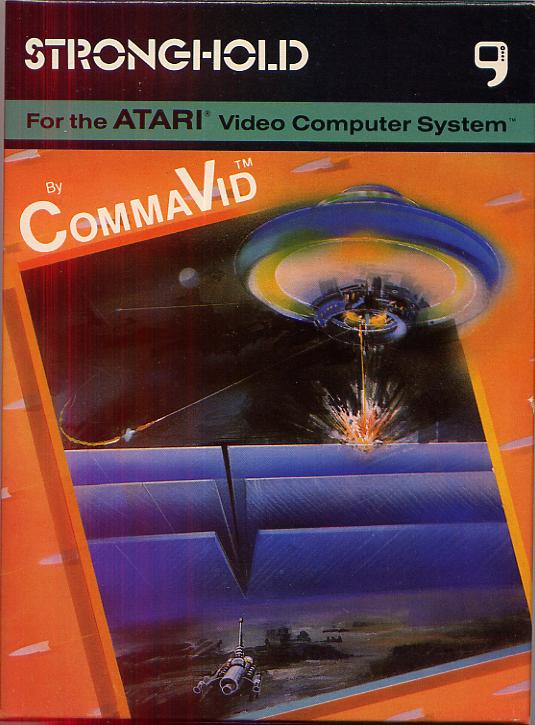 After meeting with each of these gentlemen I asked the
question “looking back now, was the CommaVid experiment more successful or less
successful than you had anticipated it would be?” and in each case I received a
similar answer. They all felt that CommaVid did what they set out to do, which
was to create some quality games which both looked good and were fun to play.
None of them got involved to become "big" but were rather intrigued
with the technology. CommaVid bowed out like many others in that early crash
but unlike many others, paid all of the bills. There were a few investors in
the company who were offered 50 cents on the dollar when the company was about
to go out. All of them took that deal. After meeting with each of these gentlemen I asked the
question “looking back now, was the CommaVid experiment more successful or less
successful than you had anticipated it would be?” and in each case I received a
similar answer. They all felt that CommaVid did what they set out to do, which
was to create some quality games which both looked good and were fun to play.
None of them got involved to become "big" but were rather intrigued
with the technology. CommaVid bowed out like many others in that early crash
but unlike many others, paid all of the bills. There were a few investors in
the company who were offered 50 cents on the dollar when the company was about
to go out. All of them took that deal.
Here’s one more bit of information regarding CommaVid. John
Hardie and Sean Kelly now own the rights to the company! When asked what their
plans for these rights meant to the gaming community, they simply stated “no
comment”. That’s right. There is a “low” that’s lower than being out of
business. =)
ONE MORE FUN FACT! Did you know that the name CommaVid was
not the original name of the company? You may have seen the MagiCard cartridge,
with its "Computer Magic, Inc." label, that would have been a hint.
Actually, CommaVid is a word formed by these fellows original planned company
name, Computer Magic Video (COMputer MAgic VIDeo).
ADDED
09/14/03: Check out
THIS
retro article on CommaVid's Irwin Gaines.
Comments? Post them
HERE.

Return to Digital Press Home
| 